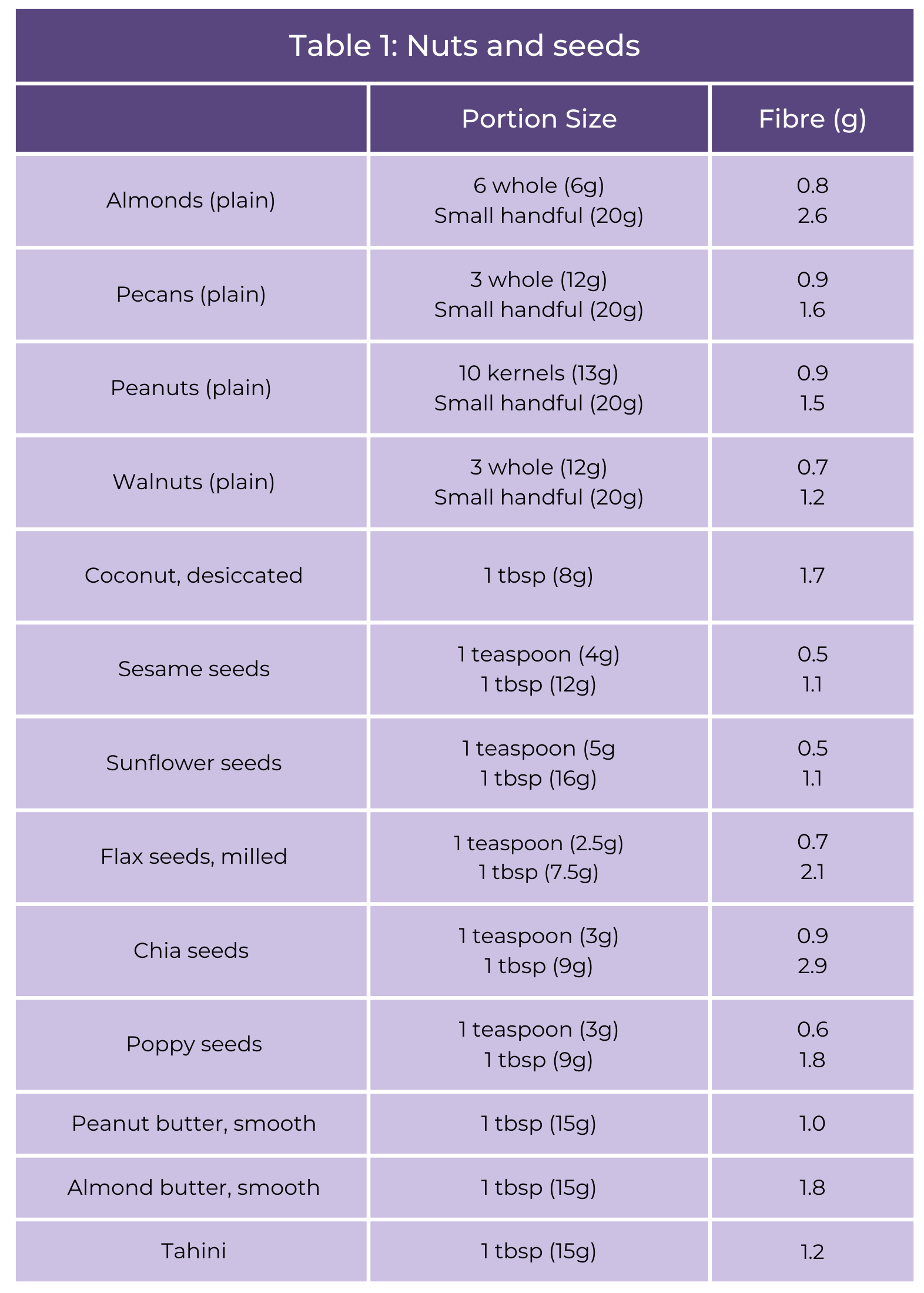
What is a gluten free diet?
Gluten is a protein that is found in certain grains, namely barley, rye, and wheat. In certain autoimmune conditions like coeliac disease, gluten can trigger inflammation within the small intestine and cause complications as well as digestive and non-digestive symptoms. Currently, the only available treatment option for coeliac disease is a life-long gluten free diet, meaning that barley, rye and wheat need to be permanently avoided. Once this is done, symptoms tend to resolve for most, and disease-associated complications also tend to be reduced.
How does a gluten free diet affect fibre intake?
Since wheat plays an important role in contributing to fibre intake, removing it from the diet in conjunction with other grains like barley and rye can result in substantial dietary fibre reductions, if fibre is not increased through alternative sources. Furthermore, in the UK, gluten free products like gluten free bread can be 300% or more expensive than gluten-containing counterparts. As a result, families from lower socio-economic backgrounds will struggle to afford such products and many people instead choose to have cheaper naturally gluten free sources of carbohydrates like potatoes and rice. Unfortunately, these also tend to be lower in fibre than many gluten-containing products.
What are the fibre recommendations for the UK?
In the UK, government recommendations are that adults should consume 30g of fibre per day. However, it is estimated that current adult intakes are lacking, with an average intake of 18g of fibre per day (60% of what it should be), and only 4% of children aged 11-18 years are currently meeting fibre recommendations Whilst we do not currently have data to suggest what the average fibre intake is for people in the UK following a gluten free diet, it is likely to be lower than the UK average due to the additional challenges following a gluten free diet poses when trying to optimise fibre intake.
What is fibre and what are the benefits of increasing it for people on a gluten free diet?
Fibre is found in plants, and it includes all carbohydrates that are neither digested nor absorbed in the small intestine. Some examples of fibre-rich foods are wholegrains, fruit and vegetables, nuts and seeds, beans, and pulses. Optimising fibre intake and diversifying fibre sources confers a number of benefits, including enhanced immunity, improved microbiota diversity and less constipation . The latter is of relevance to those living with coeliac disease or anybody else following a gluten free diet, as it is well known that once established on a gluten free diet, people living with coeliac disease can often suffer from constipation. Therefore, people living with coeliac disease will benefit from a proactive approach to help them increase their intake of plant-based foods through foods like nuts, seeds, gluten free oats (if tolerated), pulses and gluten free wholegrains. Optimising the diet this way has benefits beyond just avoiding constipation, as achieving at least 25-29g of fibre daily is associated with a significant risk reduction in all-cause mortality and incidence of coronary heart disease, type 2 diabetes, and colorectal cancer.
How can fibre be increased and diversified on a gluten free diet?
Here are some tip tops for increasing fibre intake:
- Make sure you are getting at least 5 portions of fruit and vegetables per day. One portion of fresh fruit or vegetables is equivalent to around 80g.
- Try to eat the rainbow with different colours of fruit and vegetables in your diet.
- Try to eat skins of fruits and vegetables where possible.
- Approach each meal as an opportunity to increase fibre and think of what fibre sources you can add. E.g. can you add a tablespoon of seeds to top a bowl of porridge? Can you add a handful of berries to have with your lunch or as a snack?
- Add more beans and pulses like lentils or chickpeas to meals such as curries, stews and tagines. Just half a 400g tin of kidney beans contains 13g of fibre (over one third of the daily recommendations).
- Have a variety of nuts and seeds and add them to meals. E.g. sprinkle seeds or chopped nuts on top of a salad.
- Try gluten free pasta made with gluten free grains or pulses. Compare the fibre values of the different varieties by looking at the label. E.g. gluten free pasta made from 100% red lentils contains much more fibre compared to gluten free pasta made from white rice and corn (see below tables).
- Try different gluten free grains like quinoa, buckwheat, amaranth, millet, teff, sorghum and many more. Often these grains can be used in the same way as rice or even and turned into a porridge. Quinoa and millet can be cooked and turned into a grain salad mixed with vegetables, pulses and herbs. Both quinoa and millet have more fibre than both white and brown rice (see below tables).
- Aim for gluten free products that have different fibre sources and have higher amounts of fibre in them.
- Use snacks as an opportunity to add to your daily fibre intake. E.g. why not have a 3-4 dried apricots (providing 6.5g of fibre), a handful of unsalted plain popcorn (a couple of handfuls provide 4.5g of fibre) or a small handful of nuts such as almonds (providing 2.6g of fibre)?
- Check your fibre intake in a typical day and see what other changes you can make to turn it into 30 grams per day if you aren’t already there.
Fibre content in foods
The tables below list the fibre content of a selection of gluten free foods. You can download these as PDF.
Nuts and seeds

Peas, beans and pulses

Fruit

Vegetables

Potatoes, grains and starchy foods

Summary
People living with coeliac disease and anyone else following a gluten free diet for other reasons are likely at increased risk of not getting enough dietary fibre. This can contribute to higher rates of constipation as well as the onset of other health conditions. It is important that people on a gluten free diet receive adequate dietary counselling to achieve 30 grams of fibre daily on a gluten free diet, whilst also consuming diverse sources of fibre.
YOU MAY ALSO BE INTERESTED IN:
MANAGING COELIAC DISEASE & TYPE 1 DIABETES: TOP TIPS
COELIAC DISEASE – TIPS FOR A SUSTAINABLE GLUTEN FREE DIET
ADULT COELIAC DISEASE: DIAGNOSIS AND MANAGEMENT
A DEEP DIVE INTO THE GLUTEN FREE DIET
GLUTEN FREE LIVING






